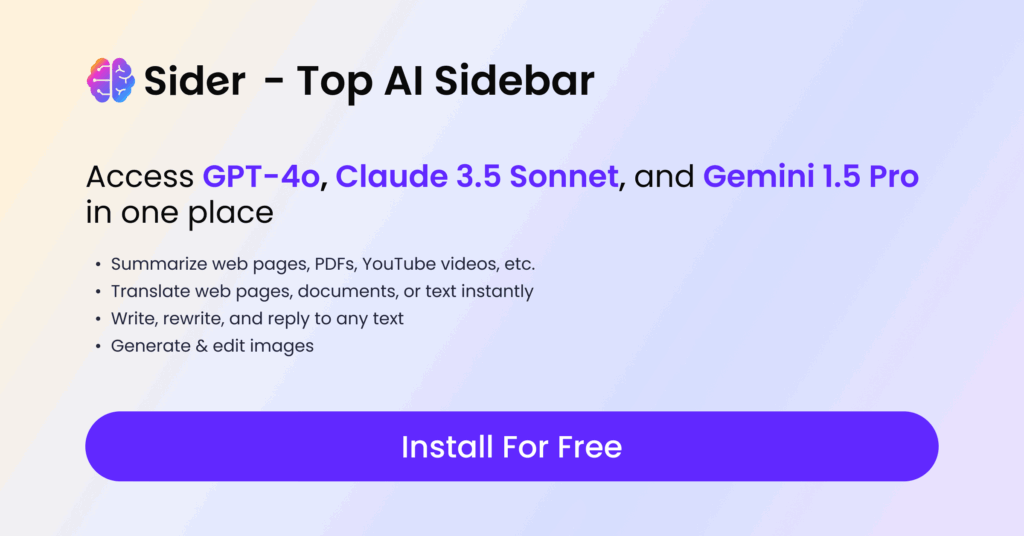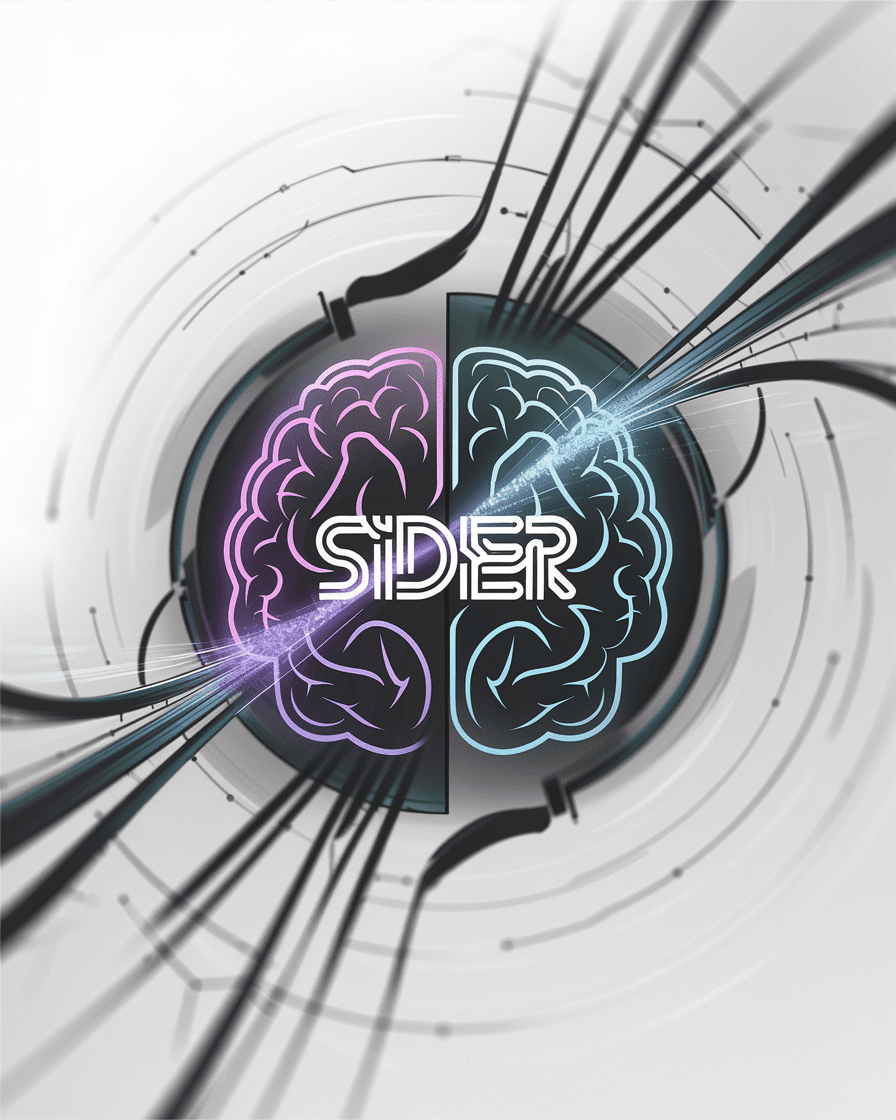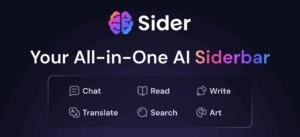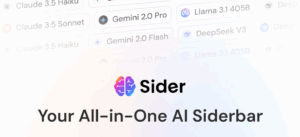Explore how students are using Sider AI to write essays, summarize research, and improve academic writing. Understand the ethical concerns, benefits, and best practices for responsible use in education.
Introduction: The Rise of AI in Education
Artificial intelligence is no longer confined to tech startups and marketing agencies—it’s making waves in classrooms and study halls. In 2023, more than 40% of college students admitted to using AI tools like Sider AI for essay drafting, research summaries, and homework help (Source: Inside Higher Ed). Among them, Sider AI has emerged as a go-to resource due to its accessibility, affordability, and user-friendly interface.
But here’s the question every student and educator should ask: Is it a helpful tool—or a shortcut that undermines learning? This blog dives into how students are leveraging Sider AI, the ethical gray areas, and how to use it responsibly without compromising academic integrity.
What Is Sider AI and How Can It Help Students?
Sider AI is an artificial intelligence-powered writing assistant designed to streamline content creation. While originally marketed toward marketers and bloggers, its features have found a new audience—students seeking support with assignments, research papers, and note-taking.
Core Features Relevant to Students:
- AI Writer: Helps draft outlines, paragraphs, or full essays based on prompts.
- Paraphrasing Tool: Rewrites content to avoid repetition and plagiarism.
- Summarizer: Condenses long articles, textbooks, or research papers.
- Plagiarism Checker: Scans written work against online sources for originality.
Example Use Case: A high school student struggling with a history essay inputs a prompt like “Write about the causes of World War I” and receives a structured first draft to refine.
The Benefits of Using Sider AI for Academic Writing
1. Speed Up Research and Writing
Writing a 1,500-word paper can take hours. Sider AI reduces this time by generating ideas, summaries, and topic sentences instantly.
Real-Life Example: A university economics student used Sider AI’s Summarizer to condense a 10-page report into bullet points, saving 2+ hours of reading time.
2. Improve Clarity and Grammar
Even strong writers make mistakes. Sider AI helps rephrase awkward sentences and enhance readability.
How It Works: Paste a poorly structured paragraph and let the Paraphrasing Tool suggest clearer alternatives.
3. Overcome Writer’s Block
Many students struggle to start writing. Sider AI offers starter points, helping users get past mental blocks.
Pro Tip: Input your thesis statement and let AI generate supporting arguments.
4. Learn from AI Suggestions
Some students use Sider AI not just to finish tasks faster but to learn from well-structured examples, improving their own writing over time.
Case Study: A non-native English speaker used Sider AI to restructure essays and improve sentence flow, leading to better grades and improved language skills.

Ethical Concerns and Academic Integrity
While Sider AI offers real-time assistance, its use raises important ethical questions:
1. Is It Cheating?
Academic institutions are still defining policies around AI-generated content. Some schools allow AI use for brainstorming, while others ban it outright.
Expert Insight: According to a Stanford University whitepaper, AI tools can be educational if used as learning aids, but unethical if submitted as original work without disclosure.
2. Plagiarism and Originality
Although Sider AI generates unique content based on prompts, there’s always a risk of unintentional duplication.
Why It Matters: Many universities now use AI detection tools like Turnitin and GPTZero to identify AI-assisted submissions.
Best Practice: Always run drafts through Sider AI’s built-in plagiarism checker—and revise heavily before submitting.
3. Dependency Risk
Overusing AI can weaken critical thinking and writing skills.
Data Point: A Pew Research Center study found that 68% of educators worry AI will lead to reduced creativity and independent thought among students.
Solution: Use AI as a co-writer—not a ghostwriter. Focus on refining and adding personal insights.

How to Use Sider AI Responsibly as a Student
1. Treat It as a Writing Assistant, Not a Replacement
Use AI for idea generation, outlining, or rephrasing—but never submit raw AI output as your own work.
Strategy: Draft with Sider AI, then edit for tone, depth, and personal voice.
2. Use It to Improve Your Own Skills
Instead of relying on AI to do all the work, use it as a learning tool.
Example: Compare your writing with AI suggestions to learn structure, grammar, and clarity.
3. Cite and Disclose AI Use When Required
Some schools require disclosure of AI usage. Be honest to avoid academic penalties.
Pro Tip: If allowed, mention AI use in footnotes or appendices.
4. Avoid Submitting AI-Only Content
Most institutions consider AI-generated submissions without human input as academic dishonesty.
Guideline: Always add your analysis, interpretation, and personal experience.
5. Combine AI with Manual Research
Let AI help you start—but verify facts, data, and citations yourself.
Tool Combo: Pair Sider AI with Google Scholar, Grammarly, and Zotero for a balanced workflow.
Platform Comparison: Sider AI vs. Other AI Writing Tools for Students
| Feature | Sider AI | ChatGPT | Jasper |
|---|---|---|---|
| Ease of Use | Simple, intuitive | Powerful but requires prompts | More complex, less beginner-friendly |
| Plagiarism Checker | Built-in | No native feature | Requires third-party tools |
| Cost | Free tier available | Free (GPT-3.5) or $20+/month (GPT-4) | Subscription-based pricing |
| Academic Support | Good for summarizing | Strong for concept explanation | Less tailored to education |
| Originality | Moderate | High, with clear prompts | Very high, especially for storytelling |
Verdict: Sider AI is ideal for students who need fast, reliable writing help without deep technical knowledge. For deeper research or advanced formatting, ChatGPT or Jasper may offer more flexibility—but at a higher cost or complexity.
Real-World Examples: Students Who Used Sider AI Successfully
1. Essay Writing Made Easier
A college student used Sider AI to create a draft on “The Impact of Climate Change on Coastal Cities.” They refined the piece with local case studies and earned a B+ grade.
2. Research Paper Summaries
Another student condensed a dense 20-page scientific article into a concise summary using the Summarizer tool, improving comprehension and retention.
3. Language Learning Aid
An international student used the Paraphrasing Tool to understand complex academic English and build fluency over time.
4. Homework Help and Quick Answers
High school students turned to Sider AI for quick explanations on literature themes, historical events, and science concepts.
Common Mistakes Students Make with Sider AI
1. Copy-Paste Submissions
Submitting AI-generated work without editing is risky. Detection tools are getting smarter.
2. Skipping Fact-Checking
AI can hallucinate or provide outdated information. Always cross-reference claims.
3. Misleading Citations
Sider AI doesn’t cite sources automatically. Adding fake references can lead to academic consequences.
4. Ignoring School Policies
Some institutions explicitly prohibit AI use. Know your school’s stance before using AI.
5. Relying Too Much on One Tool
Using AI exclusively can stunt growth in critical thinking and writing. Balance with traditional methods.
How Educators Are Responding to AI Use in Assignments
Educators are split on AI’s role in learning. Some see it as a valuable teaching aid; others fear it erodes foundational skills.
New Trends in Academia:
- AI Literacy Courses: Schools are teaching students how to use AI ethically.
- AI Detection Integration: Platforms like Turnitin now flag AI-generated content.
- Assignment Design Shifts: Professors are adjusting assessments to focus on critical thinking rather than rote writing.
Quote: “AI tools like Sider AI are reshaping education, but they must be guided by transparency and responsibility.” – Dr. Emily Tran, Professor of Digital Ethics, University of Toronto
How to Integrate Sider AI Into Study Habits Without Losing Value
1. Use AI for First Drafts, Not Final Ones
Generate a rough outline or introduction, then build upon it.
2. Rephrase, Don’t Replace
Use the Paraphrasing Tool to clarify your thoughts, not copy content verbatim.
3. Break Down Complex Texts
Struggling with a textbook chapter or journal article? Let the Summarizer simplify key points.
4. Improve Grammar and Flow
Paste your writing into Sider AI to catch awkward phrasing and improve readability.
5. Stay Accountable
Track your progress over time. If you’re using AI regularly, ensure you’re still developing your writing skills.

Conclusion: A Helpful Tool—if Used Ethically
Sider AI isn’t inherently good or bad for students—it depends on how it’s used. When applied responsibly, it can be a powerful ally in improving writing efficiency, understanding complex topics, and building confidence in expression. But when misused, it risks undermining learning and academic honesty.
Students should treat Sider AI as a support system, not a shortcut. Pair it with manual effort, critical thinking, and ethical awareness to get the most out of it. Whether you’re in high school, college, or self-learning, Sider AI can help—if you know how to use it right.
FAQs
Q1: Is Sider AI allowed in schools and universities?
A: It depends on institutional policies. Always check with your professor or institution before using AI tools.
Q2: Does it help with exams or just essays?
A: It’s best suited for essays, reports, and summaries—not for live exams or closed-book tests.
Q3: Can teachers detect if I use Sider AI?
A: Yes. AI detectors like Turnitin and GPTZero are increasingly accurate in identifying AI-generated text.
Q4: Should I cite Sider AI in my work?
A: Most academic guidelines recommend acknowledging AI use in footnotes or disclosures.
Q5: Does Sider AI support APA, MLA, or Chicago style formatting?
A: Not directly—but it helps structure content that you can format manually or with citation tools like Zotero or Citation Machine.

External Links
By using Sider AI strategically, students can unlock new levels of efficiency and learning. Now go write smarter—not faster! 🚀





